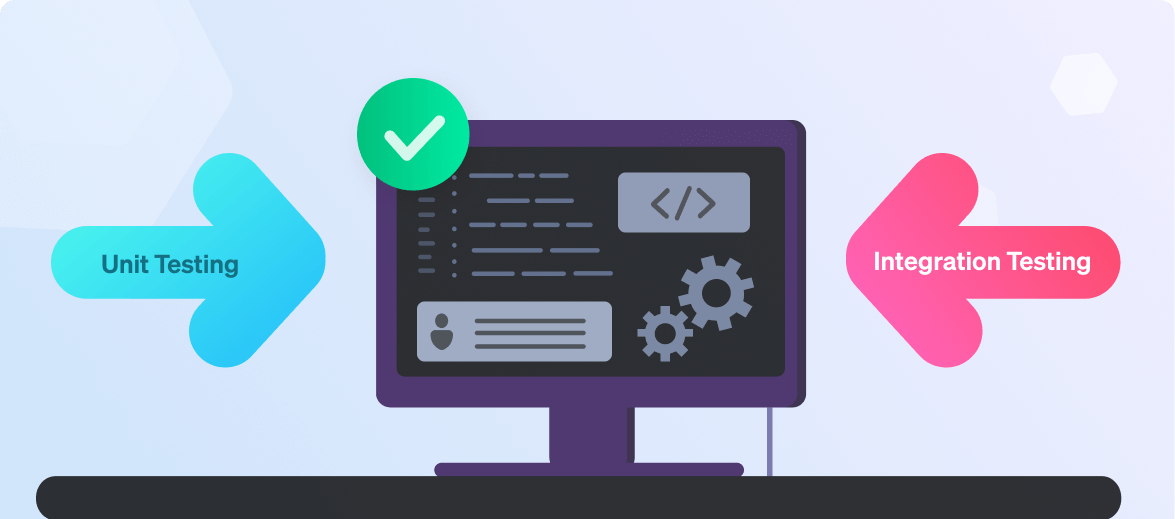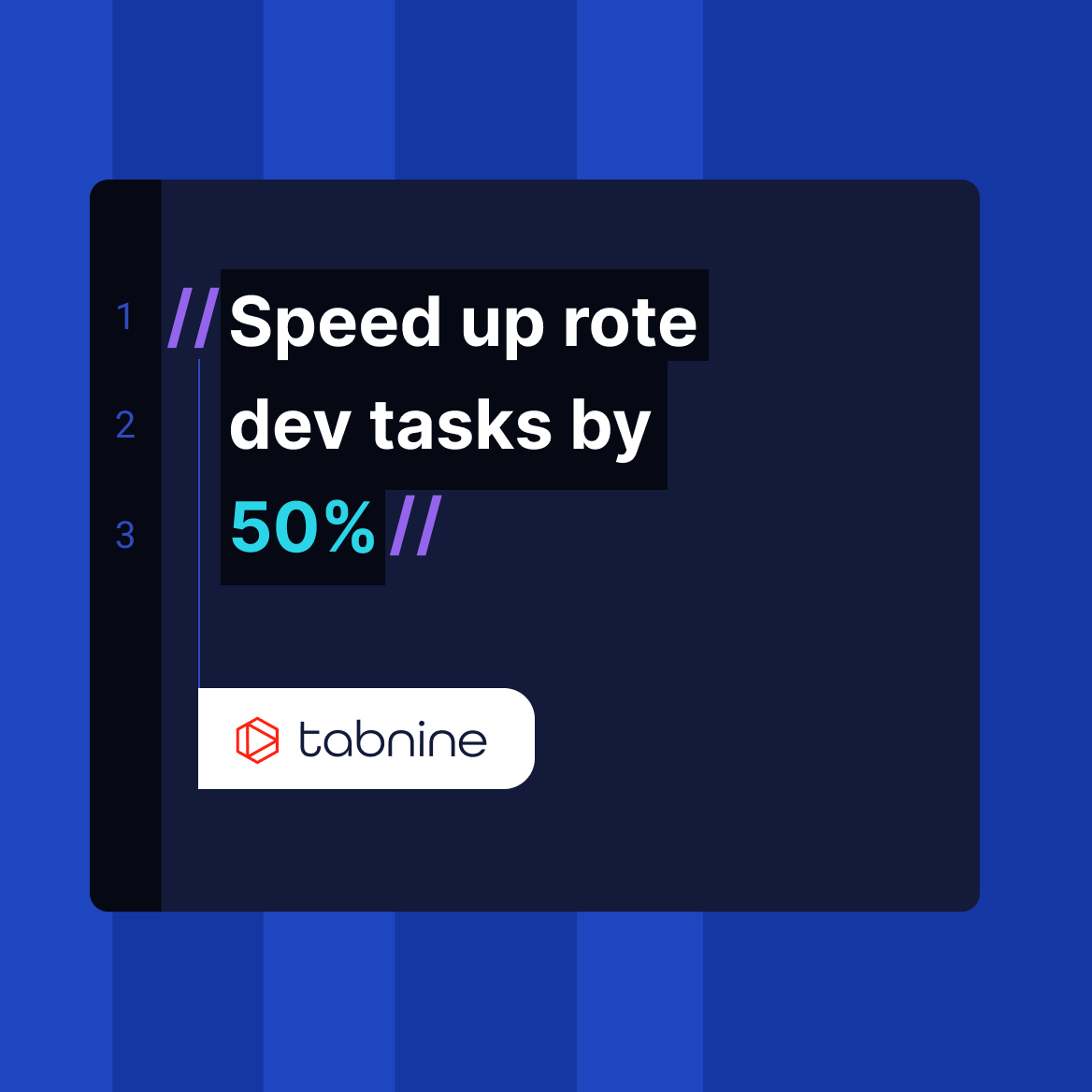Table of contents
Unit Testing vs. Integration Testing: 6 key differences
//
What is unit testing?
Unit testing is a software testing method where individual components or functions of a program are isolated and tested separately for correctness. The primary objective of unit testing is to validate that each unit of the software performs as expected. This type of testing is often automated and is usually conducted by developers.
In unit testing, the focus is on the smallest testable part of an application, such as individual methods or functions. Mock objects or stubs are often used to isolate the unit from external dependencies, which makes the test solely about the functionality of that unit. This isolation is crucial for accurately assessing the unit’s correctness, independent of other parts of the program.
Here’s a simple example: If you have a function that’s supposed to take two numbers and return their sum, a unit test would involve providing the function with sample numbers and checking whether the output matches the expected sum.
What is integration testing?
Integration testing is a type of testing that checks if different parts of the software are working together correctly. In other words, the purpose is to expose faults in the interaction between integrated units. Test drivers and test stubs are used to assist in integration testing.
During integration testing, you combine individual units of code and test them as a group. This helps to expose any issues with the interactions between these units that could not have been caught during unit testing.
A typical software project consists of multiple software modules coded by different programmers. The purpose of integration testing is to ensure that these modules work in harmony when integrated. This is a more complex process than unit testing, as it requires careful planning and sequencing of test cases to ensure that all significant points of integration are tested.
Unit testing vs. integration testing: 6 key differences
-
- Granularity: Unit testing is more granular, focusing on the smallest testable parts of a software system. Integration testing checks how these small parts work together, making it less granular and more comprehensive.
- Isolation vs. interaction: Unit testing aims to isolate each individual part of the software to ensure it works correctly on its own. Integration testing intentionally brings together individual units to check their interaction, and to expose any faults in that interaction.
- Speed: Unit tests are generally faster to run than integration tests. This is because they are simpler and involve fewer components. Integration tests, due to their complexity and the larger portion of the system they cover, tend to take longer to execute.
- Complexity: Unit tests are simpler, focusing on a single function or procedure at a time. Integration tests are more complex, involving multiple functions and their interactions. This complexity can make integration tests harder to write and maintain than unit tests.
- Tools and libraries: Different tools and libraries are used for unit and integration testing. For unit testing, tools like JUnit, NUnit, or Mockito might be used. For integration testing, tools like Selenium, Protractor, or Cypress could be used.
- Failure diagnosis: When a unit test fails, it’s often easier to diagnose the problem because the test is isolated to a specific function or procedure. However, in integration testing, a failure could be due to a problem anywhere in the components being tested, making the root cause harder to identify.
Unit testing and integration testing: Better together
Unit testing is the first line of defense in the software testing process. It’s performed by developers using the software code. This type of testing is beneficial as it’s done early in the development process, which means any issues or bugs can be identified and corrected early on, saving time and resources down the line.
Integration testing can expose faults in the interaction within complex, integrated systems. While unit testing focuses on the smallest testable parts of a system, integration testing takes a step back and looks at multiple units working together. It ensures that the integrated modules or components of the software work in harmony and deliver the desired output.
Unit testing and integration testing are not mutually exclusive; they’re complementary strategies in the software testing process. They focus on different aspects of quality assurance and together provide a more comprehensive evaluation of a software application’s performance. A robust testing strategy includes both unit testing and integration testing and should also incorporate end-to-end or acceptance testing to evaluate how the software functions as a whole.
Using generative AI to autogenerate test suites
Rapid advances in generative AI and large language models (LLMs) are creating new opportunities for automating development tasks. Today, coding assistants based on generative AI can automatically generate test suites, including both unit and integration tests, which can be a massive productivity improvement for software development teams.
How AI coding assistants generate tests
Modern AI coding assistants use LLMs trained on large datasets of code, typically collected from public open source repositories. They analyze the code’s structure and functionality and can create human-like code based on a user’s existing code and natural language instructions.
One of the compelling use cases of LLMs in coding is to create tests. Coding assistants can take existing code, automatically infer the tests needed for that code, and automatically generate the tests.
Using generative AI for unit tests
AI-based coding assistants can take existing code and generate specialized test cases for each unit or component, ensuring that all possible scenarios are covered. Typically, when generating code using generative AI, there’s a chance the code might have quality or security issues, or the assistant could misunderstand the developer’s intent. However, since unit tests are relatively simple and closely related to the underlying code, generative AI tools can write them with very high quality.
Using generative AI for integration tests
In integration testing, AI-based coding assistants can analyze multiple software components and the relationships between them (e.g., the use of methods defined in one class by another class). Based on these relationships, the tools can write complete integration tests.
Because integration tests are more complex and require an understanding of the context, they present a more challenging task for generative AI. When presented with enough code and clear natural language instructions, coding assistants can create integration tests, but they should be carefully checked to see they test all relevant aspects of the integration.
Here’s an example of how you can use Tabnine Chat to generate unit tests:
Automate unit and integration testing with Tabnine
Tabnine is the AI that you control, helping development teams of every size use AI to accelerate and simplify the software development process without sacrificing privacy, security, or compliance.
Tabnine’s AI coding assistant can predict and generate code completions in real time, and can also automatically generate unit tests and integration tests for your code.
Using Tabnine Chat, you can simply select code and ask Tabnine Chat to generate unit tests. Not only that — if the tests fail, you can ask Tabine Chat to fix the code and rerun the tests!
Try Tabnine for free today or contact us to learn how we can help accelerate your software development.




